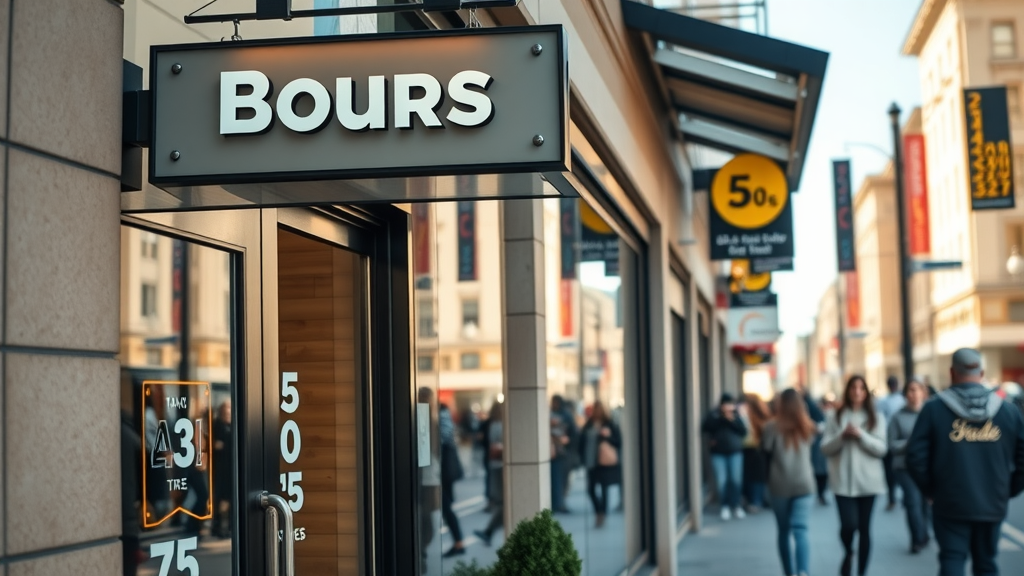Did you know that at least 46% of all Google searches are seeking local information? As we head into 2025, that statistic is only set to grow—meaning, if your Google Business Profile isn’t optimized for local SEO, you’re leaving revenue and recognition on the table. In this comprehensive guide, you’ll discover exactly what steps you must take to dominate local search results, build a trustworthy reputation, and make 2025 your business’s breakout year.
Understanding the Critical Role of Local SEO: Shaping Local Search in 2025
It’s no exaggeration: local SEO is the backbone of small business success in an era where nearly half of consumer searches are local. As Google’s algorithm evolves, users increasingly demand accurate, up-to-date business info delivered instantly. In 2025, search engine optimization isn’t just about visibility; it’s about making it effortless for potential customers to find, trust, and visit your business both online and offline. If your business is not appearing in the coveted “local pack,” your chance of being discovered drastically plummets.
Practical examples abound—like a local café doubling foot traffic after fine-tuning their Google Business Profile, or a plumber earning top local rankings by regularly updating hours and posting special offers. Today’s local search is hyper-competitive and personalized. Google recognizes and rewards businesses that provide the best, most consistent local experience. Whether you’re a retail shop, service professional, or community hub, your local SEO strategy is now your primary way to connect with real-world customers looking for you.

At least 46% of all Google searches are seeking local information—a figure that's only set to grow in 2025. Learn why an optimized local SEO strategy is now essential for every business profile.
Essential Elements of Google Business Profiles for Local SEO Success
Optimizing Your Google Business Profile for Maximum Visibility in Local Search Results
At the heart of any effective local SEO strategy is a meticulously optimized Google Business Profile. By curating every detail, you gain a competitive edge for appearing in local search results, earning customer trust, and improving your overall local ranking in Google Maps and organic listings. Critical elements include business name consistency, pinpoint-accurate location and hours, prominent contact info, definitive service areas, keyword-rich descriptions, and careful selection of categories. Google uses this information to surface the most relevant business listing for every search—so any discrepancies or missing pieces can lower your local rankings and cost you vital leads.
For example, inconsistencies between your profile and your website or major citation directories (like Yelp and Facebook) can confuse search engines , weakening your authority. Meanwhile, a comprehensive business description with local keywords ensures your services are matched to the right queries. Whether you’re a plumber, bakery, or law firm, properly tagging your business category helps you dominate local search in your niche. The combination of accuracy, comprehensiveness, and strategic keyword use creates a foundation that drives more foot traffic and phone calls from your profile.
It's also important to recognize and address common pitfalls that can undermine your local SEO efforts. For a deeper look at frequent mistakes and actionable fixes, explore these common SEO mistakes Orlando small businesses make and how to fix them —a practical resource for keeping your Google Business Profile in top shape.
Business Name Consistency for better local SEO
Accurate Location, Hours, and Contact Details for local search
Service Areas for improved local ranking
Business Description optimized with local keywords
Selecting Primary & Additional Google Business Categories

Leveraging Photos, Videos, and Rich Media on Your Business Profile
As Google puts increased emphasis on visual content, photos and videos have become ranking signals in local search engine optimization. High-quality images directly influence your position in Google Maps and how users perceive your brand. Uploading sharp, professional visuals of your storefront, staff, products, and actual customer interactions humanizes your business profile—building trust and engagement at a glance. Businesses that regularly update photos see up to 42% more requests for directions and 35% more website clicks than those that don’t.
For best results, optimize images with proper dimensions and keyword-rich alt text. Showcase your workspace, team culture, product lines, and before/after results if appropriate. For example, hair salons, home remodelers, and fitness studios benefit from galleries that help potential customers visualize transformation and professionalism. Videos and 360° tours further differentiate your listing, improving both visibility and click-through rates. Consistently updating your photo and video library keeps your profile fresh, boosts engagement metrics, and signals to Google that your business is active and reputable in local rankings.
The impact of images and videos on local search engine ranking
Guidelines for photo optimization and dimensions
Showcase your premises, products, team, and more
Example: Before/After gallery for local businesses

Using Google Posts to Enhance Local Search Appearance
Google Posts are often overlooked, yet they offer one of the most direct ways to enhance your local search appearance and engage with prospective customers. By regularly posting about updates, events, special promotions, or expert tips, you make your profile more dynamic and appealing in both Google Search and Maps. These posts allow you to include targeted local keywords, highlight your personality, and promote timely offers that drive visits or calls—all while signaling ongoing activity to Google’s algorithm.
For optimal results, craft every post with a clear local focus: feature your neighborhood, partner with other local businesses, or share behind-the-scenes glimpses relevant to your community. Posts for events or limited-time offers increase urgency and click-through rates, especially when using eye-catching visuals and a compelling CTA. Monitor engagement metrics to understand which content resonates most with your audience, then adjust your strategy for maximum conversions and higher local pack presence in search results.
Crafting Posts to attract local business leads
Highlighting promotions and events in your area
Using relevant local keywords and tracking engagement
How to Dominate Local Rankings: Local SEO Ranking Factors in 2025
The Most Influential Ranking Factors for Local SEO
Local SEO in 2025 hinges on several dynamic ranking factors, some of which carry more weight than others in Google’s local search algorithm. According to top research, your Google Business Profile signals—including your business info, categories, posts, and media—make up the largest share of influence in the local pack . Reviews and ratings play a critical role in establishing trust and visibility, while on-page signals (such as optimized pages and local keywords on your website) support relevance in search results. Citations, quality backlinks, and behavioral signals (like clicks and directions requests) also contribute to your local ranking . To outperform competitors, businesses must constantly fine-tune these elements, leverage customer feedback, and adapt to ongoing Google updates.
Ranking Factors for 2025 Local SEO | ||
Factor |
Weight |
Impact on Local Search |
|---|---|---|
Google Business Profile Signals |
36% |
Core to local pack rankings |
Reviews & Ratings |
16% |
Influences consumer trust |
On-Page Signals |
14% |
Supports search engine relevance |
Links |
13% |
Boosts authority in search results |
Citations |
8% |
Confirms business legitimacy |
User-Generated Content |
7% |
Drives engagement |
Behavioral Signals |
6% |
Indicates user satisfaction |
Standing Out in Local Search With High-Quality Reviews and Ratings
Nothing builds—or breaks—local trust faster than reviews and ratings. Google weighs both the quantity and quality of recent reviews heavily when ranking businesses in the local pack and on Google Maps. Encouraging genuinely positive feedback from happy customers is essential, but so is responding professionally to both compliments and complaints. Every interaction sends strong behavioral signals to Google about your business's authenticity, responsiveness, and service quality. For instance, a small café consistently responding to every review—good or bad—tends to outpace competitors in local search results and attract more walk-ins as a direct result.
The path to a 5-star reputation requires a system: request reviews at key touchpoints, offer incentives when appropriate, and address negative feedback with empathy and problem-solving. Over time, a profile with a strong base of recent, detailed customer reviews (mentioning location and services) will rise steadily in local rankings . Transparency, consistency, and active engagement are your greatest assets—backed by data showing that businesses with 4.5+ stars get 60% more clicks from local searches.
Encourage customers to leave authentic reviews
Responding to positive and negative feedback
Key strategies for building a 5-star online reputation
Actionable example for a small business optimizing reviews

“A fully optimized Google Business Profile is the backbone of local SEO, consistently outperforming websites that neglect this essential asset.” — Leading SEO Analyst
Mastering Citations and Consistency for Local Businesses
Consistent Name, Address, and Phone number (NAP) details across your online presence are vital for building search engine trust and avoiding ranking drops. Local citations—mentions of your business on directories like Yelp, TripAdvisor, and the Chamber of Commerce—reinforce your legitimacy to Google. Even minor inconsistencies, such as a wrong phone number or misspelled street address, can lead to confusion, lost leads, and lower local rankings . A robust local SEO strategy checks, updates, and unifies these data points everywhere they appear.
Set regular audits using tools like Moz Local, BrightLocal, or Whitespark to track down and correct mismatches. Focus on the top citation sites in your industry and region, and don’t neglect niche directories relevant to your field. By correcting errors and filling in missing data, businesses can see measurable improvements in visibility and search results. Staying consistent reinforces brand authority and sets you apart in the crowded landscape of local search for 2025.
Importance of consistent NAP (Name, Address, Phone) for search engine trust
Key citation sites for small businesses
Tools for monitoring and fixing citation inconsistencies

Keyword Research for Local SEO: Finding the Right Local Keywords
Conducting Effective Keyword Research for Your Local Market
The foundation of any high-performing local SEO strategy is targeted keyword research specific to your business location and services. Start by brainstorming what potential customers type into Google when seeking your products or services in your area. Tools like SEMrush, Ahrefs, Moz, and Google’s Keyword Planner help uncover “local keyword” variations that actually drive real-world traffic to your Google Business Profile . Analyze competitors’ profiles for inspiration and look for opportunities in underserved niches or trending local topics.
Keep a running list of the top 10 performing local keywords for your industry, such as: “best coffee shop in Austin,” “emergency dental clinic Chicago,” or “affordable wedding photographer Miami.” Remember that intent matters: hyper-local and “near me” searches often signify readiness to act (“plumber near me,” “urgent care open now”). Matching your profile content and business description to these terms is your shortcut to sustainable local rankings .
How to discover high-performing local keyword phrases
Using SEO tools for competitive analysis
Example list: 10 top-performing local keywords in your industry
Start with your primary service and location
Analyze competitor Google Business Profiles
Expand using tools like SEMrush and Ahrefs
Pay attention to search intent and volume
Optimizing Your Google Business Profile With Targeted Local Keywords
Now that you have your target phrases, the next step is integrating them naturally throughout your Google Business Profile . Place high-value local keywords in your business description, services, and products sections. Make use of them in posts and even in photo alt texts for maximum local SEO benefit. Avoid stuffing or awkward phrasing; Google prioritizes clear, helpful content that reads naturally to humans. Here’s a sample approach for a fitness center in Tampa: “Elite Fitness Tampa offers expert personal training, group HIIT classes, and state-of-the-art gym facilities for clients across the Tampa Bay area. Visit us today or book a free trial online.”
Don’t forget to optimize alt text for your images, as this extra step boosts your ranking in both Google Maps and traditional search results. Monitor how these changes affect your visibility and refine over time. With each keyword update, you’ll track consistent gains in traffic and see your business rise in the local pack —all by speaking your audience’s language.
Placing keywords in business descriptions and posts
Using keywords in photo alt text for local SEO benefit
Sample optimized business profile copy

Understanding Google Maps and Google Search for Enhanced Local SEO
How Google Maps Impacts Local Business Visibility
Google Maps is now a discovery engine in its own right and a crucial driver for local business success. Unlike traditional organic listings, map rankings prioritize proximity, relevance, and prominence—a trio that determines whether your business surfaces when users search on mobile or desktop. To stand out, ensure your location pins are accurate, your service areas are well-defined, and your category selection matches your main offerings.
Optimizing your Google Business Profile directly affects how often your business appears in searches “near me” or for related category terms. Tips for ranking higher include updating your profile frequently, adding geotagged photos, and building reviews that highlight your neighborhood or specialty. By focusing on both search and Maps, you capture different types of local search intent and maximize your exposure in every local result possible.
How map rankings differ from search rankings
The role of proximity in local pack placement
Tips for ranking higher on Google Maps
The Power of Google Search and Local Pack Placement
The local pack is the holy grail of local SEO —those top three business listings that appear above standard organic results in Google Search . Being featured here can drive 10x more clicks and calls than showing up below the fold. The local pack is determined by a mix of proximity, profile completeness, reviews, and engagement.
Precise and up-to-date business profiles boost your likelihood of landing in the local pack, where most high-intent decisions are made. Use Google Posts, reply to reviews, and add new images often to appear active and trustworthy. The more you optimize for accuracy and relevance, the more your business benefits from enhanced placement and superior local ranking metrics.
Explanation of the "local pack" and its impact on search results
How to position your listing prominently in Google’s local pack
Why accurate business profiles increase search engine exposure
Leveraging Local Content and Events for Local SEO
Creating Content That Attracts Local Customers
Local content creation is about connecting your business to its community and improving your search engine visibility. Writing blog posts focused on neighborhood events, local news, or regional FAQs demonstrates expertise and relevance to both Google and residents. Build authority by partnering with other local businesses , co-hosting events, or supporting local causes—and then documenting these efforts on your site and business profiles.
By naturally including location-based keywords and featuring images from real community interactions, you make your business a reference point not just for products or services but also for neighborhood happenings. This approach helps you attract more engaged local customers and gain additional mentions (citations), both of which boost your local SEO clout.
Developing blog posts on local topics and community news
Showcasing partnerships with other local businesses
Incorporating location-based keywords

Using Events and Special Offers to Influence Local Rankings
Highlighting events, limited-time offers, and promotions on your Google Business Profile can dramatically elevate your position in local search results . These timely updates keep your listing fresh and entice more engagement, which Google interprets as a sign of an active, desirable business. For example, a boutique hosting a summer sale or a restaurant promoting a Father’s Day brunch can see spikes in profile visits and foot traffic when such offers are posted and shared.
Monitor the impact of your efforts through Google’s built-in insights and analytics. See what types of posts or promotions generate the most calls, map directions, or website clicks—and replicate successful tactics for future campaigns. By tying local content to real, actionable promotions and tracking performance, you can create a feedback loop that perpetually improves your visibility and relevance in local rankings .
Posting about local events and limited-time offers
Example: How seasonal promotions elevate your search engine profile
Tracking results through insights and analytics
Top Tools and Resources for Elevating Local SEO
The Best Local SEO Tools and Software for 2025
Staying ahead in local SEO requires the right arsenal of SEO tools . From citation tracking to competitive analysis, these platforms reveal where you stand, what’s working, and where to improve. BrightLocal offers in-depth audits and citation building, while Moz Local ensures NAP consistency across directories. Whitespark excels at finding citation opportunities, and SEMrush is a powerhouse for keyword tracking and analytics. Each tool suits different needs and budgets, and the best choice will depend on the size of your business and your specific outreach goals.
Use these tools to automate reputation monitoring, discover new local keyword ideas, and uncover gaps in your competitors’ strategies. Their dashboards can become your daily command center, delivering alerts and actionable insights that guide every aspect of your local SEO plan for 2025.
Overview of the most effective SEO tools for local businesses
Platform-specific analytics for monitoring Google Business Profiles
Features checklist for selecting the right SEO tool
Comparison of Leading Local SEO Tools | ||
Tool |
Main Features |
Pricing |
|---|---|---|
BrightLocal |
Citation/tracking, audit |
$29+/mo |
Moz Local |
NAP consistency, reporting |
$14+/mo |
Whitespark |
Citation building |
$39+/mo |
SEMrush |
Rank tracking, analytics |
$119+/mo |
Free and Low-Cost Ways to Boost Your Google Business Profile
While premium tools provide robust insights, many high-impact local SEO actions are completely free or very affordable. Regularly updating your business info, responding to reviews, and posting photos or offers cost nothing but time and drive significant changes in ranking. Leverage Google’s free resources, such as the Google Business Profile Manager and Google Analytics, to monitor and improve your local search presence. Effective use of these systems can result in faster ranking improvements than you might expect, especially for small businesses just starting out.
Here’s a practical checklist for owners: 1) Claim and update your listing, 2) Verify your service area, 3) Add quality images, 4) Solicit and respond to reviews, 5) Regularly post updates and special offers. Even as you grow, these core steps will build a foundation for dominance in your local market—without breaking the bank.
High-impact actions for small business owners
Leveraging Google’s own resources to improve local search visibility
Checklist: 5 free tactics to transform your business profile’s effectiveness

Common Local SEO Mistakes and How to Fix Them
Avoiding Pitfalls With Google Business Profiles and Local Search
Despite the best intentions, common local SEO mistakes can undercut even the most promising businesses. The usual suspects: outdated business listings, missing or inconsistent info, inadequate responses to reviews, and neglecting Google Posts or photos. These errors not only hurt local rankings but can also lead to lost trust with potential customers searching for up-to-date, accurate service details. Regularly auditing your profile ensures your business info matches across all platforms, reducing confusion and maintaining algorithmic favorability.
The solution is vigilance and commitment to proactive management. Schedule recurring calendar reminders to review and update your info, monitor analytics, and refresh images or services as needed. Encourage your staff or trusted customers to help spot inaccuracies, and always be open to feedback. The more you invest in keeping your local presence current, the greater the payoff in rankings and customer loyalty.
Most frequent small business errors in local SEO
How outdated or inconsistent info damages local ranking
Solutions: Regular updates, monitoring, and proactive engagement
Staying Ahead: Tracking Algorithm Changes That Impact Local Search
Google’s algorithm is in constant flux, making it crucial for local businesses to stay informed about updates that affect their position in local search results. Following trusted SEO sources, subscribing to newsletters, and participating in local business forums can keep you ahead of the curve. Some SEO tools even send alerts when major shifts or ranking drops are detected, giving you time to react proactively.
Part of an adaptive SEO strategy is incorporating regular research and professional development. Attend webinars, read industry news, and take advice directly from Google’s guidelines to update your approach as needed. Forward-thinking businesses treat search engine optimization not as a “set-and-forget” task, but as a continuous, evolving discipline that keeps them ahead of competitors—and visible in every local search that matters.
Keeping up with the latest ranking factors
Following Google’s guidance and local SEO news
Tools for monitoring local ranking shifts
Frequently Asked Questions for Local SEO and Google Business Profiles
What is a local SEO?
Local SEO is a digital marketing strategy that focuses on optimizing a business for search queries with local intent. It helps businesses appear on search engines for users seeking services in their area, enhancing online visibility in local search results, Google Maps, and the local pack.
Is doing a local SEO worth it?
Absolutely. Local SEO increases a business's chances of being found by nearby customers, making it vital for small businesses that rely on local clientele. It is a high-ROI marketing tactic that outperforms many traditional advertising methods.
How do I set up local SEO?
Start by creating or claiming your Google Business Profile. Then, optimize all fields, use local keywords, obtain citations, encourage reviews, and create local content. Regularly update your profile and monitor local ranking through dedicated SEO tools.
Is local SEO free?
Many key actions—such as setting up a Google Business Profile and requesting reviews—are completely free. However, some advanced tactics or SEO tools for tracking and analysis may come with costs.
Recap: Key Actions to Take for Excelling at Local SEO in 2025
Claim and optimize your Google Business Profile
Populate your profile with accurate details, photos, and videos
Focus on building high-quality local reviews
Research and use strategic local keywords
Monitor your local ranking and update regularly
Leverage content and promotions for your area
Avoid common mistakes; stay up to date on algorithm shifts
"Your business's future depends on mastering local SEO—and every competitive advantage starts with your Google Business Profile."
If you’re ready to take your local SEO to the next level, consider how a holistic approach can transform your business’s growth trajectory. Beyond optimizing your Google Business Profile, understanding why SEO is the best marketing investment for small businesses in Orlando can help you prioritize your resources and maximize ROI. Discover the long-term benefits and strategic insights by reading why SEO is the best marketing investment for small businesses in Orlando . This perspective will empower you to make smarter decisions and unlock even greater success in your local market.
Book Your Free Local SEO Strategy Session
Ready to grow your business? Book your free marketing strategy session with our team today. https://aaronmills.marketing/
To further enhance your understanding of local SEO and its critical components, consider exploring the following authoritative resources:
“What Is Local SEO and How to Improve Your Local Ranking” : This comprehensive guide from Sprout Social delves into essential strategies for boosting your local search presence, including optimizing your Google My Business profile and leveraging customer reviews. ( sproutsocial.com )
“A Comprehensive Guide to Local SEO” : HubSpot’s in-depth article offers valuable insights into local SEO best practices, such as engaging on social media, ensuring NAP consistency, and optimizing on-page elements to improve local search rankings. ( blog.hubspot.com )
By consulting these resources, you’ll gain a deeper understanding of local SEO strategies and how to effectively implement them to enhance your business’s online visibility.
 Add Row
Add Row  Add
Add 



Write A Comment